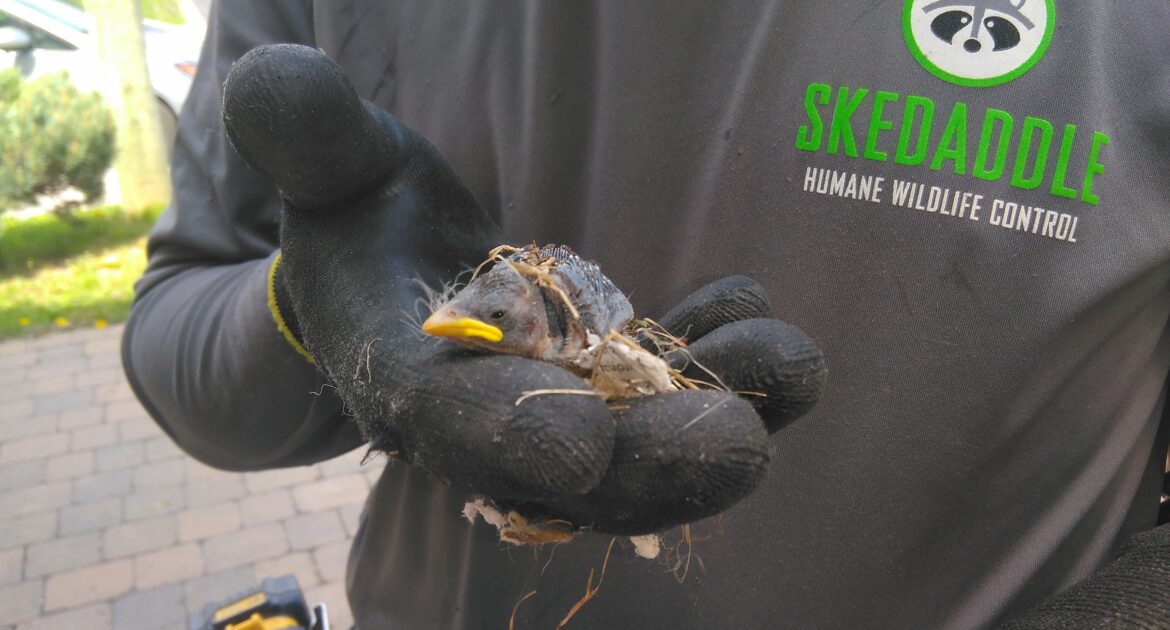Many songbirds in Canada migrate south when the weather turns cold but return with the approach of summer and warmer weather. The following species are examples of birds you are likely to see in Ontario in large numbers during the summer. Many people are delighted by these birds’ bright feathers or melodious songs, but if they get inside your house, you need professional bird removal in Hamilton.
Here are 5 birds you may see in your backyard during the summer and some information about each of them.
1. Common Grackle
Grackles are blackbirds recognizable by their large size, iridescent feathers, and golden eyes. You’ll often find them high up in trees, congregating in noisy groups. If you have a vegetable garden, you are more likely to see grackles as they love to eat corn and other crops. A very small number of grackles remain in Ontario all year long, but most migrate south in winter. Grackles don’t have lovely voices and often bully smaller species, so their presence on your property may have you wondering how to keep birds away.
2. American Robin
The American robin’s markings are so iconic and its migratory patterns are so well known that many people see the first re-emergence of robins as a harbinger of spring, even though many other birds are returning at the same time. Robins are instantly recognizable with their black heads, gray backs, reddish-orange chests, and yellow beaks. Their trilling, chirping song is familiar too. The American robin is named after the European robin, which has similar markings but is otherwise unrelated.
3. Blue Jay
Blue jays love to eat acorns, so you are most likely to see them on your property if you have oak trees. They eat other types of grain, nuts, and seeds, as well as insects. Blue jays may be more active in summer, but Ontario birdwatchers see them almost as often in winter. They tend to stand out because of their bright blue feathers and their braying call, which they will often make repeatedly early in the morning. You’ll definitely want to know how to get rid of birds if blue jays get into your house and start waking you up at the crack of dawn.
4. American Goldfinch
As with the American robin, the goldfinch was named after a similar-looking but unrelated bird found in Europe. Most American goldfinches migrate south in winter and return in spring. The few goldfinches that remain in Ontario through the winter are harder to spot because their feathers take on a dull brown colour. In the spring, the females remain dull, but the males sport vibrant yellow and black plumage. This plus their light, twittering song makes them a favourite among birdwatchers.
5. Northern Cardinal
Male cardinals are decorative birds with bright red feathers, orange beaks, and a little tuft on the top of their heads. Like blue jays, they are sighted in Ontario nearly as often in winter as in spring, and their red feathers contrast sharply with both white snow and green leaves. Female cardinals are mostly brown but have a little red on their wings and have the same orange beaks and head crests as the males, so they are easy to recognize as well. Cardinal song is distinctive: A series of high-pitched chirps followed by a lower-pitched trill. Though people are often charmed by cardinals, they can be aggressive in defending their territory against others of the same species.
As long as the birds stay in the yard, you shouldn’t have a problem, but you don’t want them to get in your house. These birds can cause damage to surfaces and slipping hazards on walkways with their excrement, especially if present in large numbers. You can reduce the likelihood of this by cleaning up grass and twigs that birds use for nesting material and removing food sources, such as nuts and seeds. Some species of birds are protected by law, so always call Skedaddle for the removal of birds from your home to ensure compliance.




